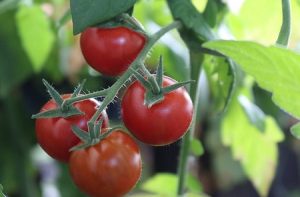Last Updated on October 2, 2023
Learn how to plant iris bulbs for a display that’s simply Iris-istible!
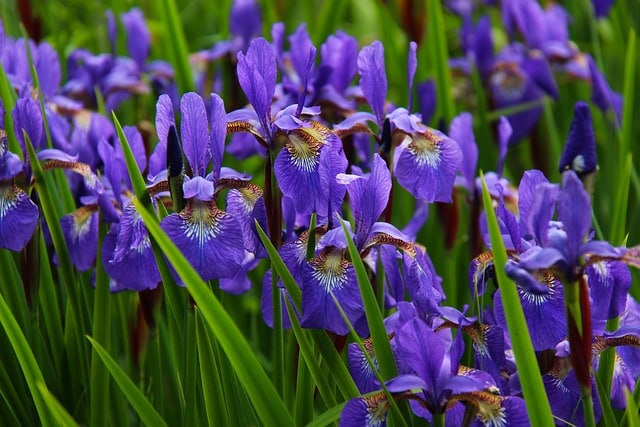
If you’re planning to grow some bulbous plants in your garden, plant Iris bulbs. These spectacular flowers are named after the goddess of rainbows and are among the most vibrant garden perennials in the world. If you live anywhere in USDA zones 3-9, these hardy perennials will perfectly flourish in your backyard.
*This post contains affiliate links. If you choose to purchase any of the products I have recommended, I may receive a commission at no cost to you.
Do irises grow from bulbs or rhizomes?
All iris plants are perennial. They can grow from creeping rhizomes or from bulbs.
Reticulata iris (blooms in late winter – early spring) and Dutch iris (blooms in late spring – early summer) grow from bulbs. These bulbs are storage organs that contain nutrients to support the growth and development of the plant.
Bearded iris (most popular iris type) and Siberian iris grow from rhizomes. Rhizomes are underground stems that horizontally spread out and produce new shoots and roots.
It’s important to note that not all irises grow from bulbs or rhizomes. Some irises grow from a modified stem called a caudex.
Read related: 15 iris types
When to plant iris bulbs
It is best to plant iris bulbs in the fall when the soil cools off and the temperature stays between 40 to 50 degrees Fahrenheit. Try to plant them before the first frost. If you miss that window, then wait until the ground thaws enough to plant them.
Take the temperature of your soil with the help of a soil thermometer and make sure that for the next 12 weeks it will stay below 60 degrees, or think about planting your irises in pots.
It’s worth noting that iris bulbs are typically available for purchase in garden centers or online during the late summer or early fall, so you can plan ahead and have the bulbs ready for planting at the appropriate time.
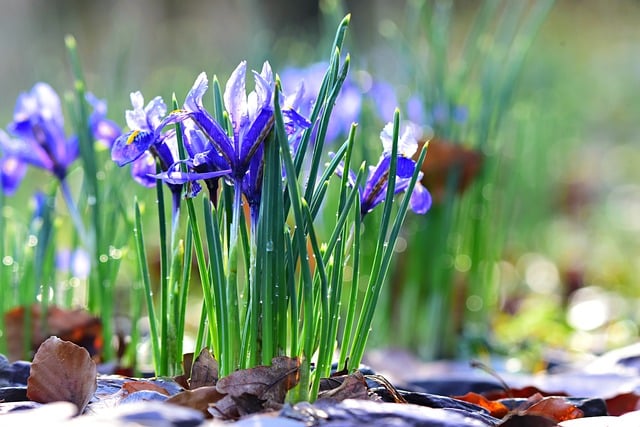
Planting timings for iris bulbs in USDA zones 3-9
The timing of planting can vary depending on the region and the weather patterns, so it’s important to consider the local conditions and recommendations for your area.
USDA Hardiness Zones 3 – 5: Plant in September
Planting iris bulbs in early fall n these colder zones.allows the bulbs to establish root systems before winter sets in.
USDA Hardiness Zones 6 – 7: Plant in October
For zones with milder winters, October is a suitable time for planting iris bulbs. The slightly later planting date still provides ample time for root development before the colder months.
USDA Hardy Zones 8 – 9: Plant in December
These zones experience milder winters, and planting in December ensures the bulbs are exposed to cooler temperatures but not at risk of frost damage.
Why should iris bulbs be planted in the fall?
By planting the bulbs in the fall, you allow them time to establish roots before winter sets in. This ensures that they are ready to sprout and bloom in the following spring.
Related reading about fall activities 😊:
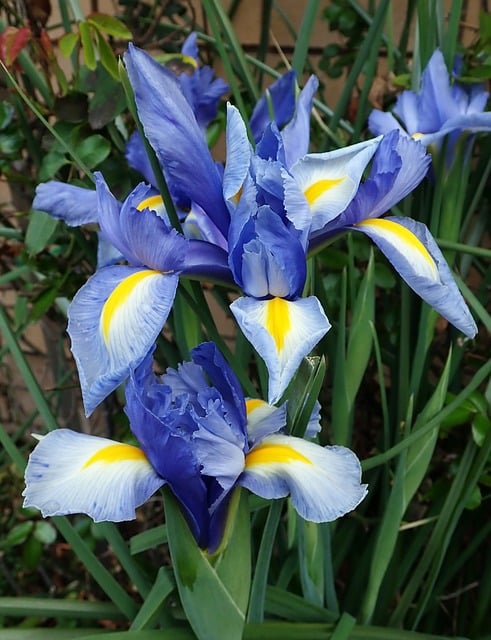
Can you plant iris bulbs in the spring?
Yes, you can.
If iris plants are planted very late in winter or early spring, they may not bloom the first year, but they will still establish their root systems and bloom the coming year.
Where to plant iris bulbs
- It’s best to grow irises under full sun to enjoy their display of blooms. They can also survive in half a day of sun, but it’s not ideal for them. When there is not enough light, they fail to bloom.
- They like to grow in neutral to slightly acidic, well-fertile soil.
- Proper drainage throughout the year is crucial. Irises can’t tolerate soggy soil in winters.
Should I soak iris bulbs before planting?
It is not a mandatory practice, but you can do it to shorten the growing time.
Soak iris bulbs in warm water for 12 hours before planting. Soaking allows the bulb to absorb enough water to begin growth early, which helps save 2 to 3 weeks of time.
How to plant iris bulbs
Before planting iris bulbs, soil preparation is important. You can either grow them in a container or directly in the ground. Here are a few things that you need to do.
Preparing the planting site
Iris bulbs require well-drained soil. Therefore it’s better to grow them in a raised flower bed.
Prepare the soil: mix the garden soil with compost and bulb food to make it fertile.
Check soil pH. Irises can tolerate neutral, slightly acidic or slightly alkaline soil.
Also, make sure that your picked site is getting enough sun for the flowers to bloom.
Planting irises in the ground
The Reticulata iris bulbs are small and round, with a brown, papery outer layer. The bulbs should be planted shallowly, about 2-3 inches deep, in well-drained soil.
Dutch iris bulbs should be planted at a depth of around 4 to 6 inches (10 to 15 centimeters) from the top of the bulb to the soil surface. This planting depth provides the bulbs with adequate coverage and protection while allowing the shoots to emerge easily.
As for the spacing between iris bulbs, it is generally recommended to leave a gap of approximately 4 inches (10 to 15 centimeters) between each bulb.
1. Make 2-3 inches deep holes for Reticulata iris or 4 -6 inches (10 -15 cm) deep holes in the ground for Dutch iris. Leave a space of 4″ between holes.
2. Place Dutch or Reticulata iris bulbs in holes, with their pointy ends facing up.
3. Fill the holes with the soil. Make sure that bulbs are staying upright.
4. Now perform a deep watering ritual. 😊 Watering at this stage will help bulbs in sprouting leaves quickly.
How to plant iris bulbs in pots
- If you’re planning to plant iris bulbs in pots, buy 6″ (15 cm) deep pots with drainage holes or cute bulb pans that can be used indoors and outdoors.
- Now get some high-quality potting mix to fill these pots.
- If your potting soil is not the “ready to use right out of the bag” kind, then mix your potting medium with compost so your iris bulbs can get enough nutrition for their growth. Then fill the pot or container with this potting mix until it is ¾ full.
- Put the bulbs on the soil’s surface to give them a little push so they can get inside the soil. This way, you can make sure that the bulbs will stay erect. Remember to keep the pointy ends of the bulbs facing up.
- Top it off with another layer of soil.
- After planting, water the soil until it is moist enough.
- Now put your pot with irises in a sunny place and wait for the magic to happen.
Iris care
Caring for irises is pretty easy.
Bulbous irises require a moderate amount of watering. In summer and winter, keep the soil of your plant less moist or relatively dry.
Aside from proper watering, you also need to keep insects and pests away. A certain pest usually attacks when the irises reach their budding phase. If you want to keep your plants safe, use an organic insecticide to repel them.
Read related:
If you want to use irises as cut flowers, cut them before the buds open and blossom into mature flowers. This way they will look gorgeous and stay beautiful for a few weeks.
Do irises come back year after year?
After completing the flowering period, bulbous irises die down. Then, they remain dormant throughout the winters.
You don’t need to do anything at this stage. Leave them in the ground, and they will sprout and bloom again after the winter is over. However, you must transplant the bulbs once they reach the age of 4.
Read related:
Final thoughts on planting iris bulbs
Whether as cut flowers or beautifying a border, bed, or container, you’ll love the vibrant color that irises bring to your front or backyard. These are among the most elegant, glowing, and colorful hardy perennials that you can grow from bulbs. With only basic knowledge, you can grace your garden with ever-multiplying, long-lasting blooms of irises for years to come.
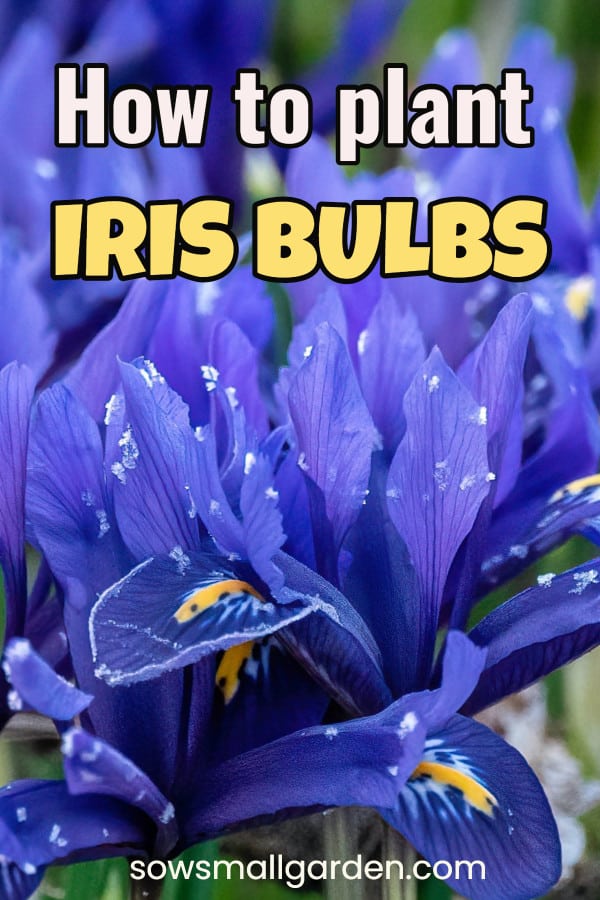
Pin for later reference!


